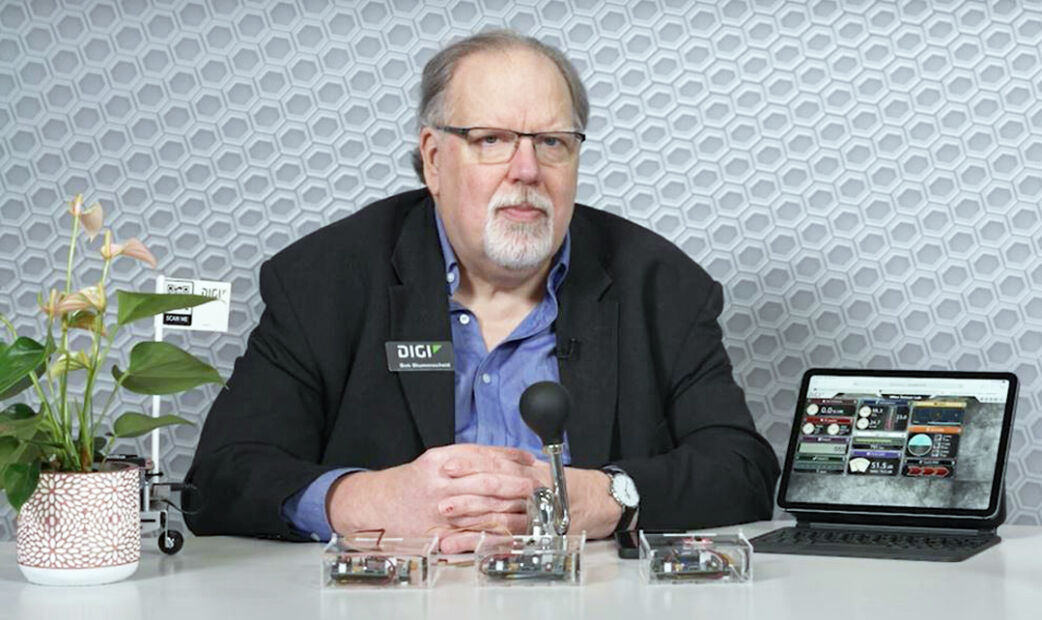When your life depends on the IoT
- August 11, 2023
- Steve Rogerson
Steve Rogerson talks with Bob Blumenscheid from Digi about how the IoT is changing medical technology.

My Apple Watch tells me when to take my medication, monitors my heart for atrial fibrillation, sets exercise goals, counts my steps, tracks my workouts, oh, and tells the time. Yet this is just the tip of how the IoT has changed the world of medical technology.
There is an iceberg full of medical devices and applications the IoT has influenced and, in some cases, completely revolutionised. We have seen the large, established medical companies adopting new levels of connectivity and control, we have seen consumer device makers moving confidently into the medical world, and we have seen a plethora of medical start-ups with bright ideas to make our lives healthier.
“The sea change is that you can’t release a medical device that is not connected anymore,” said Bob Blumenscheid, senior product manager at Digi, when I caught up with him earlier this week. “That is really table stakes for a medical device.”
This connectivity can be for transferring relevant data to medical professionals or, and more importantly, allowing the medical device to be updated with the latest security features. This though is itself a potential minefield; it is not like a phone where you may have to wait while an app updates.
“You can’t do that with a medical device,” said Bob, “because it is hooked up to a patient 24/7. You have to look at having physical lockouts so it can’t be updated at any time. You also can’t brick a product with an update.”
This, he said, took the IoT to a higher level on both performance and legality. And it is causing problems for the software community on how to handle this, and who is responsible. Bob believes ultimately it is the medical device manufacturer who has to take responsibility for the hardware and the software.
“This is a whole new world for them,” he said.
It is even a problem for those companies that have been making medical devices for years, that maybe thought having an IoT connection was just like a serial port they have on some devices anyway. But the problems were bigger than they may have thought.
Coming at this from the other direction are IoT devices manufacturers that have decided to move into the medical field and suddenly their equipment is being hooked up to people.
“The lines are blurring,” said Bob.
Another problem, he said, was that doctors were behind the curve when it came to reviewing the data these devices gather.
“You can’t bring it all to the cloud and have the doctors checking all those data every day,” said Bob.
This means more edge processing and filtering of data, and knowing when to send alerts, such as the Apple Watch that will call for help if you have a fall.
What a great thing,” said Bob.
Personally, I think it still needs some work as mine has a few times decided I have had a fall when I haven’t.
“What is good to see,” added Bob, “are regulations. This area needs oversight and direction. You can’t just put these things out there.”
All this has come about because of the convergence between medical IoT that is life critical and the consumer IoT space, where there is not the same support or the same lifetimes.
“These areas will converge and drive standardisation and legislation,” said Bob. “We will see new standards bodies and requirements.”
And these are needed because of issues with security. If all the data from your wrist are going to the cloud or direct to a doctor, they need to be kept secure. This is even more so with connected devices such as pacemakers. If somebody hacks into a hospital’s server, they may find they have access to someone’s pacemaker, and kill them.
“Is that feasible in the real world? I don’t know,” said Bob. “What if someone gets in and starts looking at something and accidentally shuts a medical device down. This is feasible if you are not secure all the way round.”
The other security problem is protecting IP. These devices are not locked in a data centre but out in the real world, connected to people, and giving ample opportunities for reverse engineering.
“They can try to figure out the vulnerabilities or work out how to make a cheap knock-off version,” said Bob. “The damage to a brand could be disastrous. It is a big danger. Somebody is lying awake at these medical companies thinking about this and it is not the traditional engineer. They might not be at Embedded World or CES, so how do we talk with them?”
And that does need figuring out. Traditionally, medical approvals have been slow-moving, with good reason. But IoT technology is moving fast and consumer devices are stepping into the medical space. Doctors are already looking at data from Fitbits, Apple Watches and the like as part of their information gathering process. The demand is there for this to be extended to more critical medical equipment, and that is happening. Yet there are still difficulties to sort out, as with any fast-moving technology, and here people’s lives, literally, depend on it.




